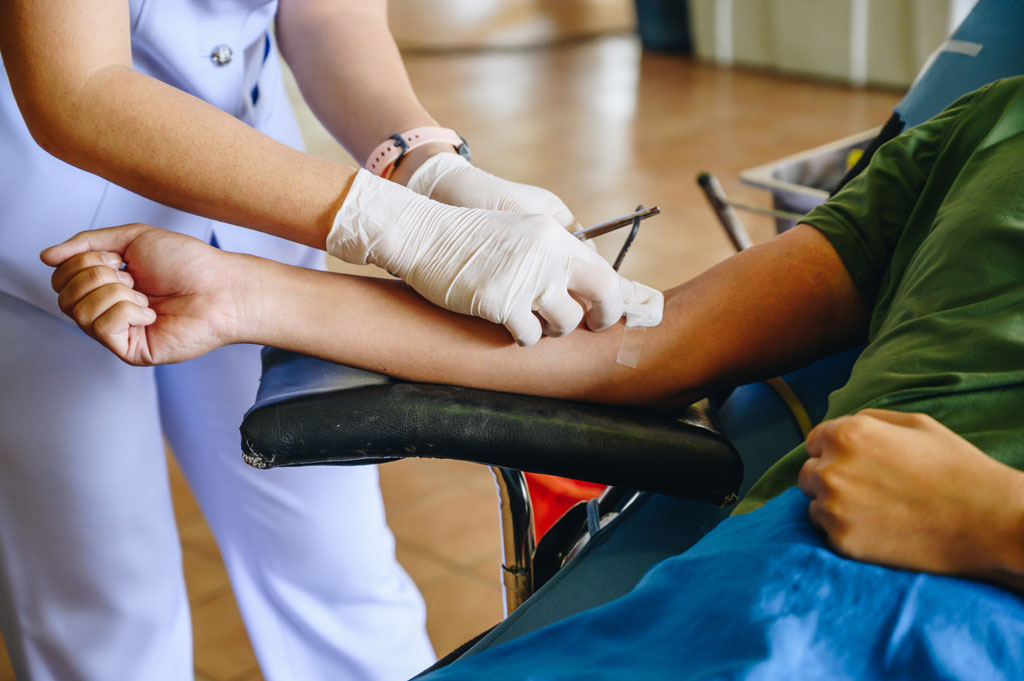Monitoring your glucose levels gives you information you need to make decisions about managing your diabetes.
Glucose monitoring shows you how insulin, food, activity, stress, and illness affect your glucose levels. It also lets you know when you need to take action to keep your glucose levels in your target range. There are three ways of monitoring glucose levels:

CGM devices are small, wearable monitors that continually measure your glucose levels 24/7.

Finger prick blood glucose checks show you what your blood glucose level is at a single point in time.

An HbA1c check is a pathology blood test that reflects your average glucose levels over the past 10 to 12 weeks.
CGM shows you your current glucose level, and whether it is steady, rising or falling, and how quickly. This allows you to make informed decisions about how to respond to your glucose level.
You can get alerts if your glucose level is outside your target range, or if a hypo is predicted.
This can help you manage diabetes more confidently during everyday activities such as eating out, exercise or travel.
Your diabetes health professional can help you decide which device best suits you and your lifestyle.
CGM devices measure glucose in the fluid between your cells instead of in the blood. CGM readings and finger prick blood glucose readings will often be different. The difference is because of the time it takes for the glucose to move from the blood and into the fluid between your cells. This can take 6-12 minutes, depending on your glucose level, and is referred to as “lag time”. You will see the greatest difference between these readings when your glucose levels change quickly.
The benefits of using CGM devices include continuous tracking and alerts. Learn more in our CGM fact sheet.

You’ll need a blood glucose meter, blood glucose strips, a lancing device (finger pricker) and a lancet (finger pricking needle). Your diabetes health professional can help you decide which blood glucose meter is best suited to you.
You can use your NDSS card to access subsidised blood glucose strips from your local NDSS Access Point. This is usually your local community pharmacy.
You can also buy blood glucose meters, finger prickers, needles and sharps containers from your pharmacy.
All blood glucose meters store the readings in a memory. So, it’s important to be sure the time and date settings on the meter are correct.
If you prefer, you can write down your readings in a record book or use an app on your smartphone or device. This allows you to share your daily blood glucose patterns with your diabetes health professional.
The HbA1c test is a way of checking how your diabetes is going overall.
The HbA1c test measures the amount of glucose that is stuck to the red blood cells. The more glucose in the bloodstream, the more it sticks to the red blood cells. This causes the HbA1c result to be higher. As the red blood cells live for an average of 10 to 12 weeks, your HbA1c reflects your average blood glucose levels over that time.
The lower the blood glucose levels, the lower the HbA1c. If your blood glucose levels are in your target range, your HbA1c will likely be in your target range too.
If your HbA1c is above your target range, you are at a higher risk of developing diabetes-related complications.
Your doctor will usually request this test for you every 3 to 6 months. Always ask your doctor for your results and discuss what you can do if your HbA1c is not in your target range.

The general HbA1c target for people with type 1 diabetes is 7% (53 mmol/mol). Sometimes this target may be higher or lower depending on your personal circumstances or other health conditions.
You and your diabetes health professional will set a HbA1c target that is right for you.
The usual times to check your glucose levels are:
There are other times that it might be recommended to check your glucose levels:
There may be other times that your diabetes health professional recommends you check your blood glucose levels as part of your diabetes management plan. Your blood glucose readings can help you make decisions about managing your diabetes.
When you wake up:
Before meals at other times of day:
2 hours after the start of a meal:

Your diabetes health professionals can help you decide if CGM is right for you. They will work with you to choose the right device for your lifestyle and diabetes management.
CGM devices are great tools to help you manage your diabetes. Work with your diabetes health professional to get the best out of using your device.
The NDSS gives you access to subsidised diabetes products to help you manage type 1 diabetes. Go to these links for more information about subsidised products.
You can purchase products such as adhesive, wipes, patches, lancets, management diaries through your local pharmacy or online diabetes shop.
To avoid a needle stick injury, make sure your sharps are disposed of in a strong, plastic, screw top container that’s puncture proof.
You can purchase an Australian Standard Sharps container, or you can use a strong plastic container with a tight-fitting screw top lid such as a bleach bottle.
Avoid using thin plastic containers that may be pierced, glass, cardboard, or aluminum containers as they’re not puncture or shatter proof.
Only put sharps in your sharps container.
Used wrappings or paper waste can be safely disposed of in your household garbage bin.
When your container is full, seal the lid firmly and take it to your local sharps disposal site where it will be incinerated. This may be at your local hospital, council, or pharmacy.
Last updated: May 2025